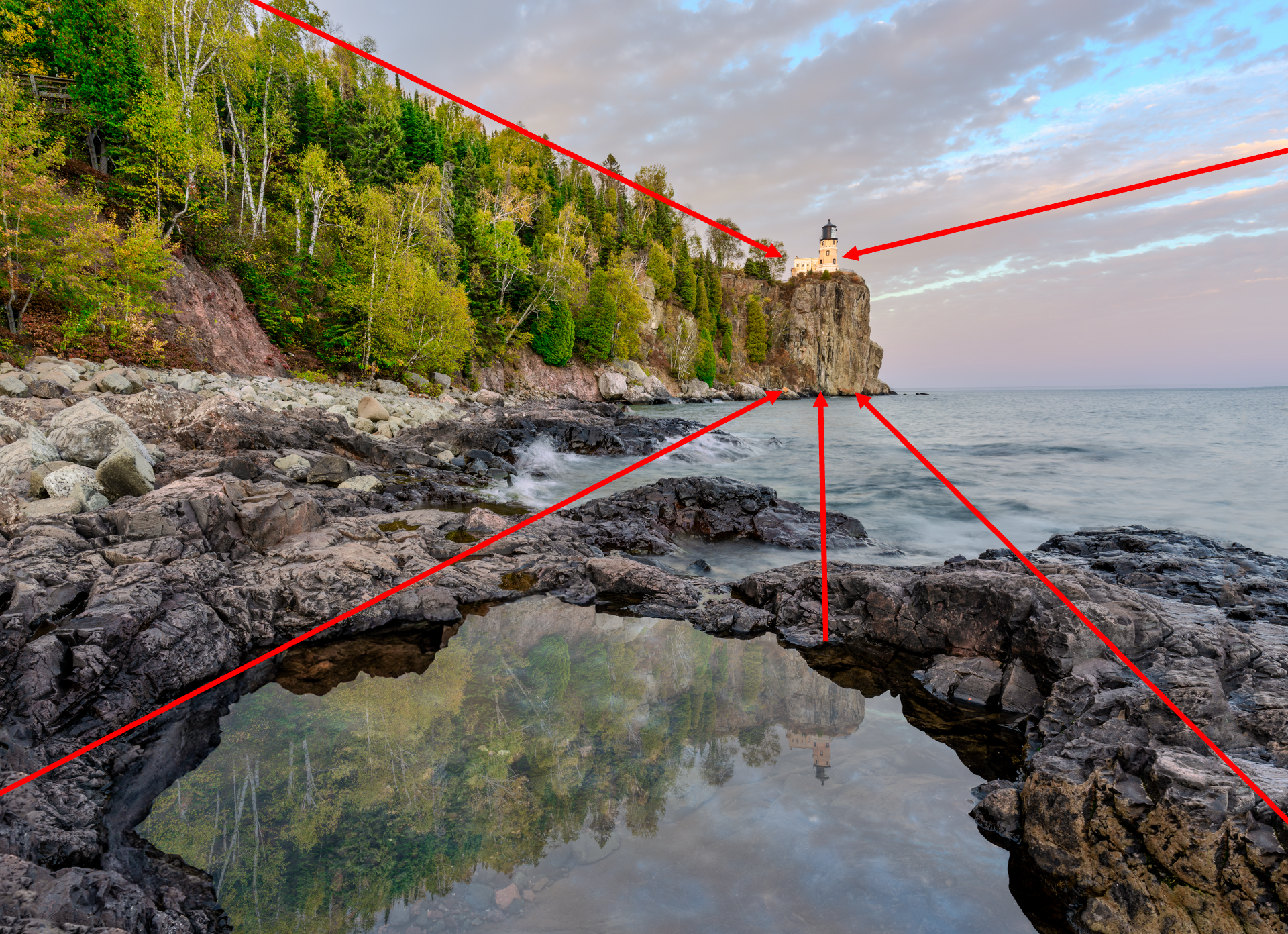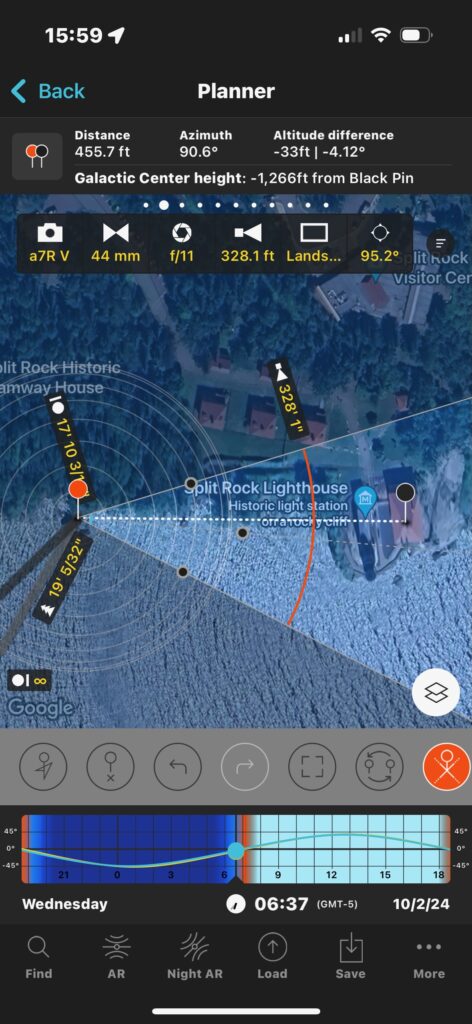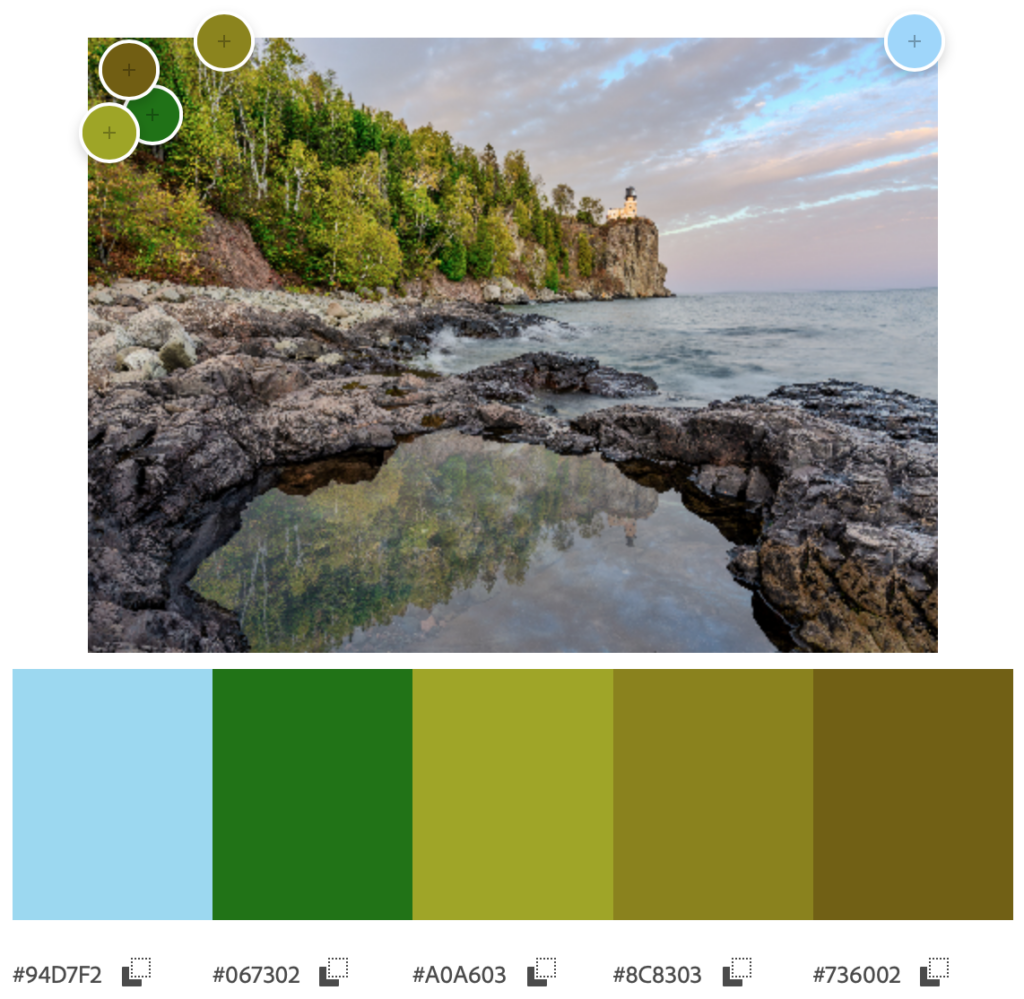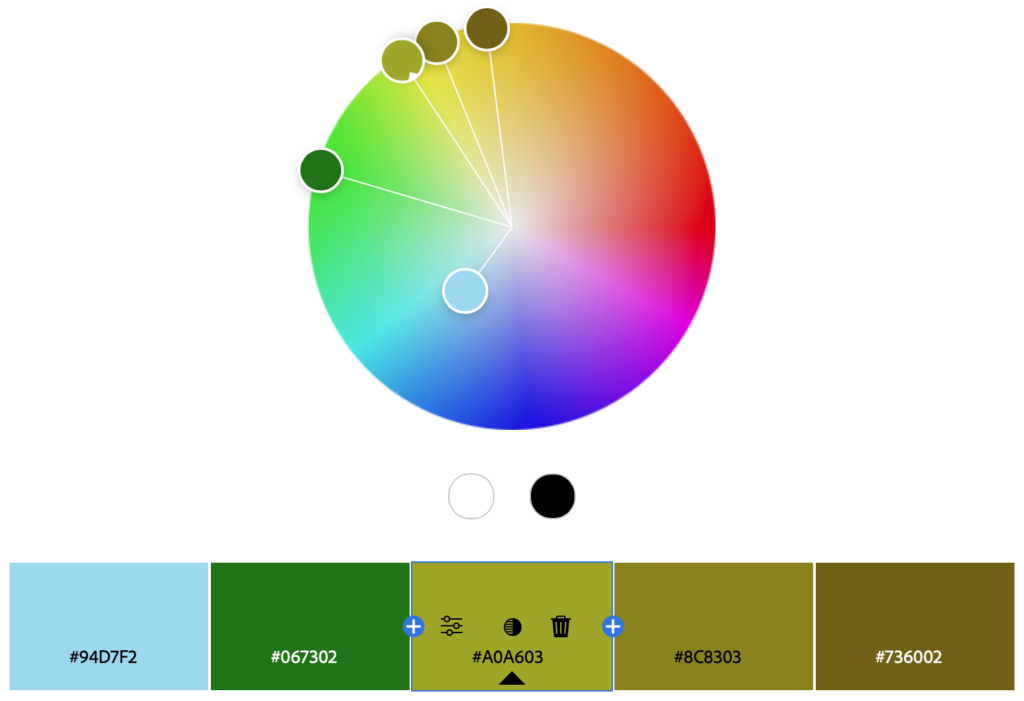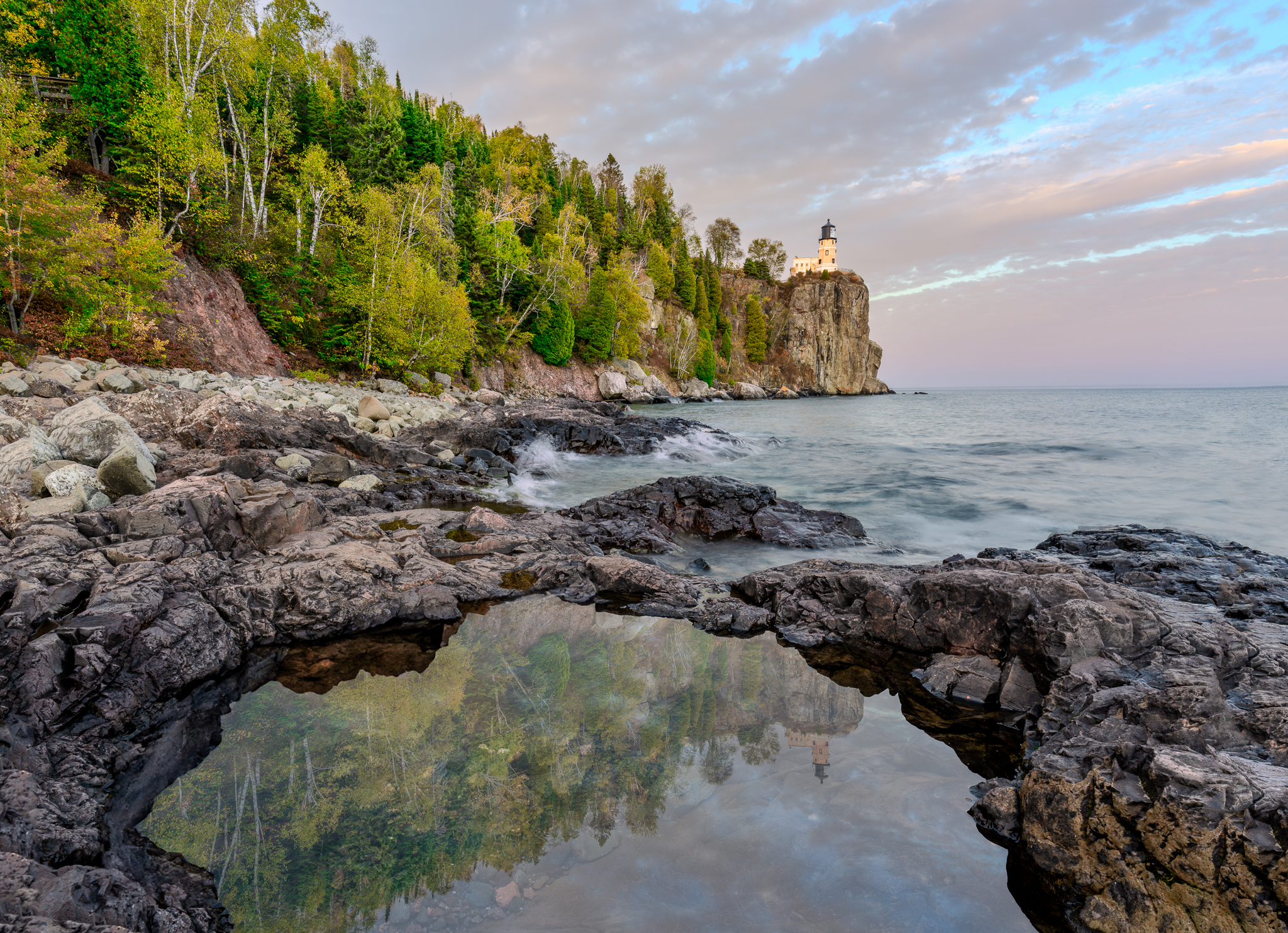I have dreamed of being able to drive up to this site to capture this photo, especially during fall when the colors were changing. Then a break offered me a few days to make the trip. My research showed that some bedrock along the shoreline would offer some locations where water would pool and potentially create a reflection of the lighthouse upon the surface. I wasn’t sure where. I did find one image by Greg Lundgren titled Split Rock Lighthouse Reflection that led me to believe this was possible. So this would be one of my priorities upon arrival, which I did as this picture shows.
My arrival late in the day on Tuesday, October 1 only gave me a moment to look at the terrain. And try to frame up a sunset golden hour photo. With it being extremely overcast, I knew that whatever I shot that evening would most likely be proofing shots. It wasn’t until the next morning that I had more time to walk the bedrock and shoreline to see if I could find a potential reflection pool. Working my way from the Western end of the bedrock to the East, I noticed a pool at the last maritime part of the shoreline, the access area by the pump house. Below is the concept shot I took. When framing up the photo, I did notice that there wasn’t any reflection. I assumed this was because the sunlight wasn’t radiating from the West, but at 8 AM it was still behind the lighthouse. When I looked at this image closely, I noticed that this was the exact location used by Greg Lundgren in his image. To see his impressive photo, click on the photo link above.
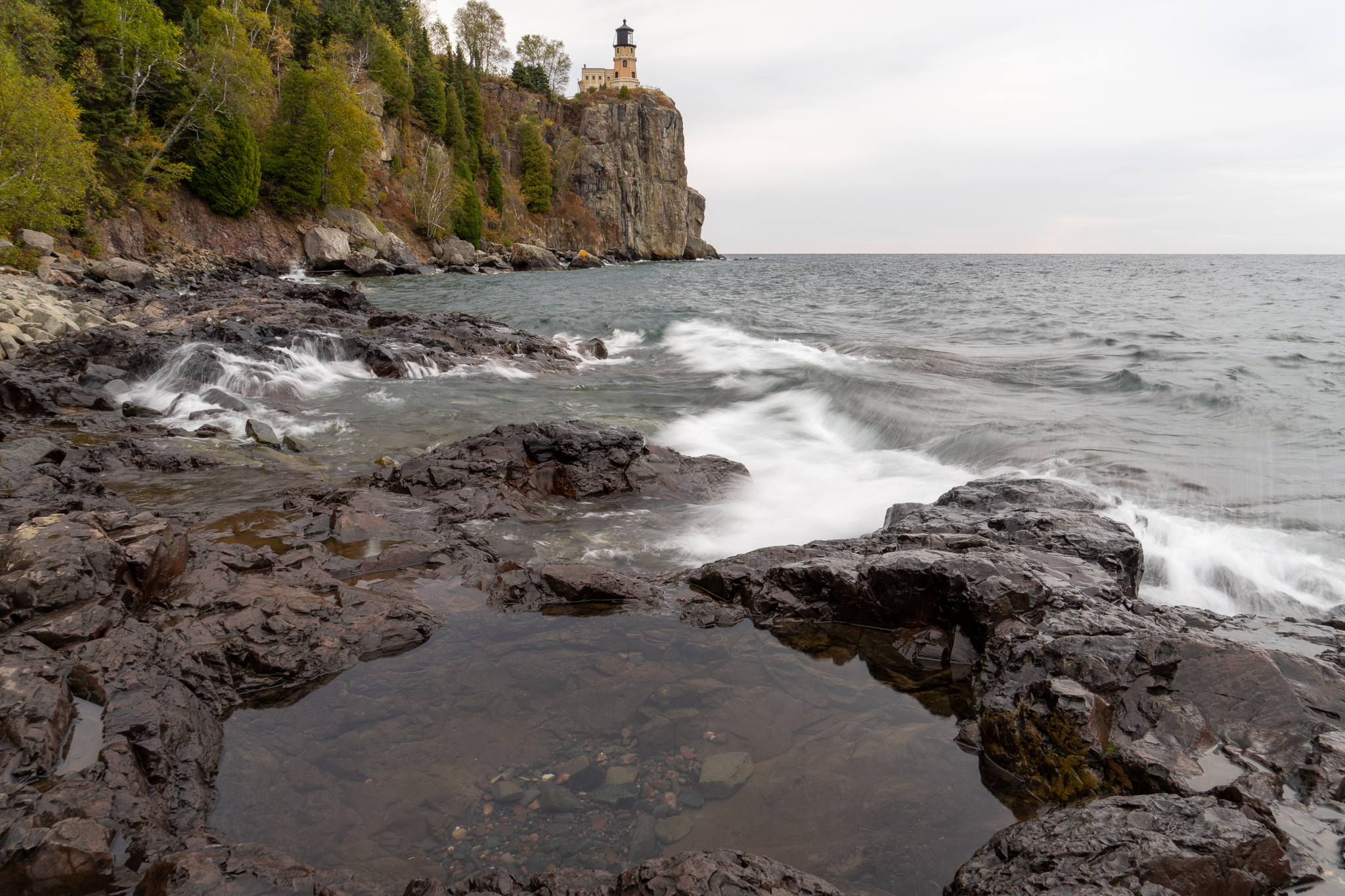
Looking closely at the pool and the positional distance from the lighthouse it became apparent that for the light to reflect in the pool you would need the sunlight radiating in a sunset angle low enough to reach the pool that is roughly 800 feet away. With an elevation gain of 33 feet from the pool to the base of the lighthouse use the trigonometry tangent function which calculates out that the elevation angle to the lighthouse is 16.2 degrees. That would mean that the sunset angle shouldn’t drop below the same degrees, since this is an isosceles triangle. Theoretically doubling the azimuth should define the upper range of 33 degrees, but that would be the arrival time to set up and start monitoring the movement of the reflection into the pool. Using PhotoPills this calculated out to a shooting time gap for this day would be between 2:51 PM and it would bump up on the start of Golden Hour at 5:55 PM.
This also meant that the shooting angle would need to match the reflection angle of 16.2 degrees, but to shoot at that angle would require the camera to be very low to the bedrock. Opening the tripod legs angle to a horizontal position allowed me to capture the complete pool area as Image 1 shows. However, in attempting to capture that image, I couldn’t bring in the lighthouse and ridgeline. So I elected a four-image vertical panorama using the four images below to expand the vertical range. This was done in Photoshop using the cylindrical option. The purpose was to stretch the middle ground making more of that visible, which was not as visible if I stuck with the shooting angle used in the first image.

The final composite photo reveals both the deliberateness from planning and some luck in getting a break in the overcast, which was the case upon my arrival and during most of the day that this shot was taken. The luck was the break in the clouds that happened at sunset contrary to what the Windy app was showing (see below) and how the clouds turned streaked with a bit of salmon tone.
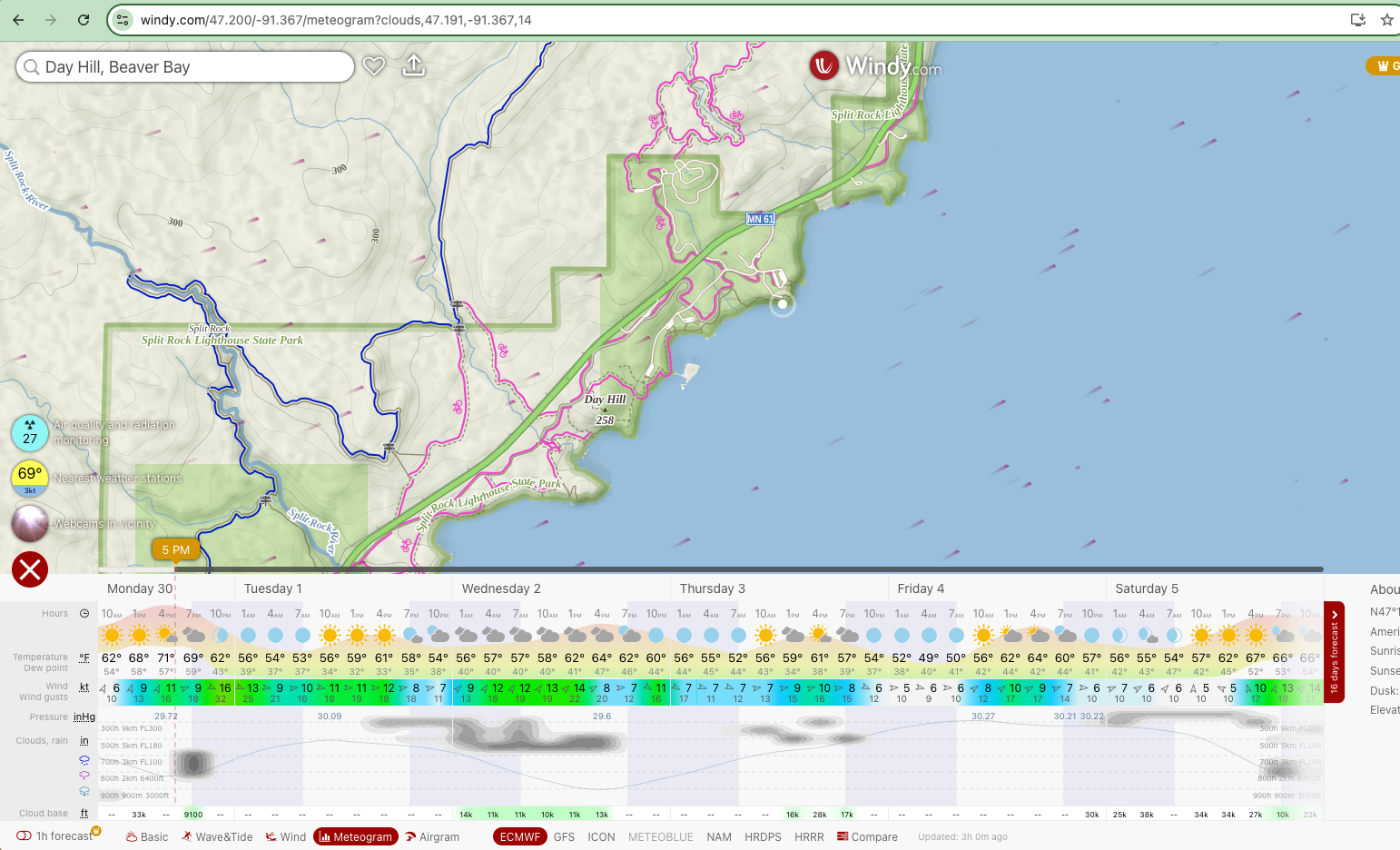
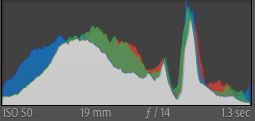 For this shot, I deviated from my normal behavior of shooting in manual mode and took it with Aperture priority. This was to ensure I sustained my depth of field throughout each of the photos I had to take. It also helped to maintain a zero exposure bias. My rationale was to capture all the photos needed to make this composite image before I lost the light and reflection. Normally, I also focus on my color theme, but I opted to focus on finding a composition that offered a nice blend of fall colors with Adobe Colors selecting high saturation tones in the upper left-hand corner of the image. What I did like most of all in this image is how the leading lines from each corner point to the lighthouse as shown below. What isn’t as revealing as what was noticed while taking these photos was the color hue of the lake water just in front of the lighthouse cliff which was a red rust hue. In the photo, it is very subtle.
For this shot, I deviated from my normal behavior of shooting in manual mode and took it with Aperture priority. This was to ensure I sustained my depth of field throughout each of the photos I had to take. It also helped to maintain a zero exposure bias. My rationale was to capture all the photos needed to make this composite image before I lost the light and reflection. Normally, I also focus on my color theme, but I opted to focus on finding a composition that offered a nice blend of fall colors with Adobe Colors selecting high saturation tones in the upper left-hand corner of the image. What I did like most of all in this image is how the leading lines from each corner point to the lighthouse as shown below. What isn’t as revealing as what was noticed while taking these photos was the color hue of the lake water just in front of the lighthouse cliff which was a red rust hue. In the photo, it is very subtle.
